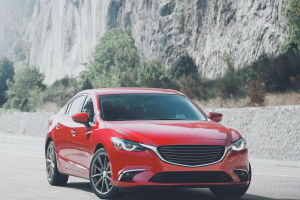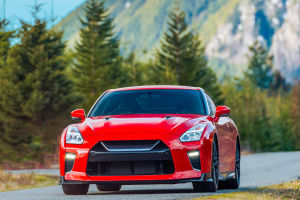With the development of the automotive industry and advancements in automotive technology, car color selection can be considered diverse. Apart from some mass-produced body colors, there are also many customizable body colors.
Although these colors are appealing, white remains the safest color for cars, and it is also the mainstream choice in the automotive market for body color.
Moreover, choosing a white body color offers several advantages. While white cars may be safer than black cars, nighttime safety depends more on lighting than color.
Colors have a particular impact on car safety, and various data show remarkably similar results: black cars have the highest accident rates, silver-white vehicles have the lowest, with white cars falling in between. The reason lies in the stimulation of the visual system by different colors.
Black, light gray and dark blue are considered receding colors. Oncoming vehicles painted in these colors can be easily misjudged for distance.
On the other hand, colors like silver-white, white, and yellow are advancing colors. Vehicles painted in these colors give the perception of more incredible speed and shorter distance at the same following distance and speed.
Furthermore, light-colored cars have more substantial reflectivity, while dark-colored cars possess a stealth attribute in poorly lit conditions, almost like a black hole absorbs the light. Also, white is an expanding color; under the same brightness, white appears more prominent and is easier to spot in advance. Hence, silver-white cars are safer than black cars, but what difference does it make when the lights are turned on?
Regardless of the car color, the brightness of lights, such as marker, fog, brake, turn signals, etc., is generally comparable. Simply turning on the tail lights for a warning ensures safety in poorly lit conditions. In nighttime driving, is there a need to be concerned about the car's color when lighting serves as a warning? Similarly, during daytime driving, there's no necessity for color warnings because most vehicles have noticeable daytime running lights.
Data shows that in some areas of Europe, mandating vehicles to have daytime running lights has led to a double-digit decrease in traffic accidents. Thus, lighting serves as a more effective warning mechanism than car color. Learning to utilize lights properly is the most crucial aspect.
Under the influence of lighting, car color's impact on safety is insignificant. So why are car manufacturers so keen on promoting white cars?
Manufacturer's considerations:
White solid paint is ordinary paint, while black and other colors belong to metallic paint. Metallic paint refers to the addition of aluminum powder in the paint to increase brightness and hardness. The manufacturing cost of metallic paint is much higher, and the spraying process is more complex.
White solid paint has much lower manufacturing costs and simpler spraying processes. A white car can accept several hundred yuan or higher costs than unique high-end colors. Therefore, white cars are considered safe, expansive, and visually appealing. How else could cost be controlled?
Owner's considerations:
White cars are more resistant to dirt. Dark-colored cars like black tend to show a haze on the paint surface even with slight dust, whereas the base color of white vehicles is not very conspicuous, so some dust is less noticeable.
Therefore, white cars are even more dirt-resistant than black cars. However, two points need clarification: the transparent coat layer of a vehicle will age, and aging will cause it to turn yellow. There's no significant change when a dark-colored car combines with a slight yellowing, whereas the yellowing of the clear coat on a white car will be pretty noticeable.
However, white cars attract birds more. Because white has a solid reflective ability, it stimulates birds' excretory functions. Data shows that white cars have more bird droppings than dark-colored cars. Bird droppings can corrode the car's paint.
Whether to buy a white or black car depends on the owner's specific needs.


